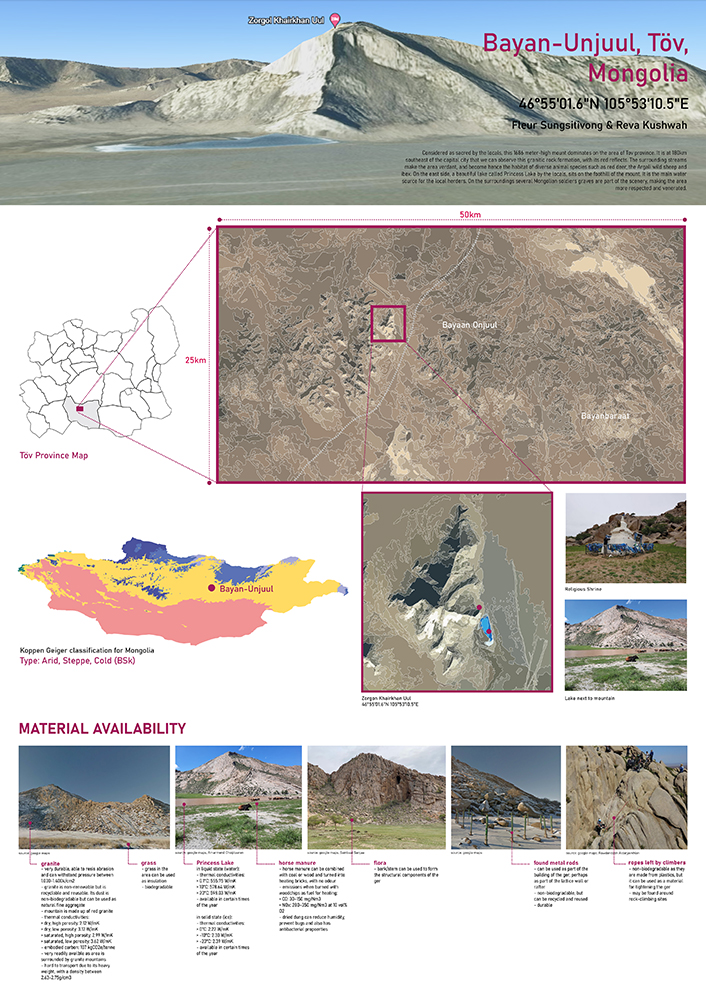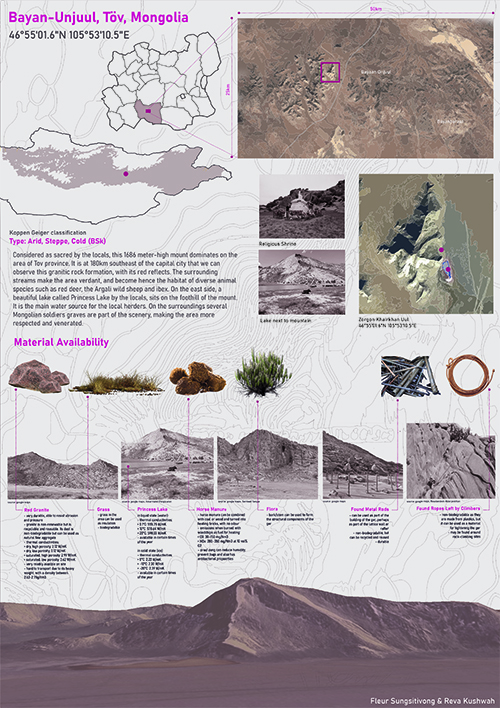

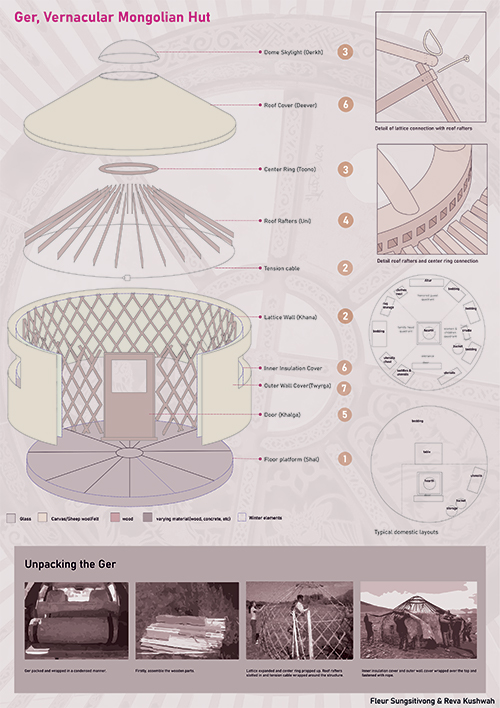


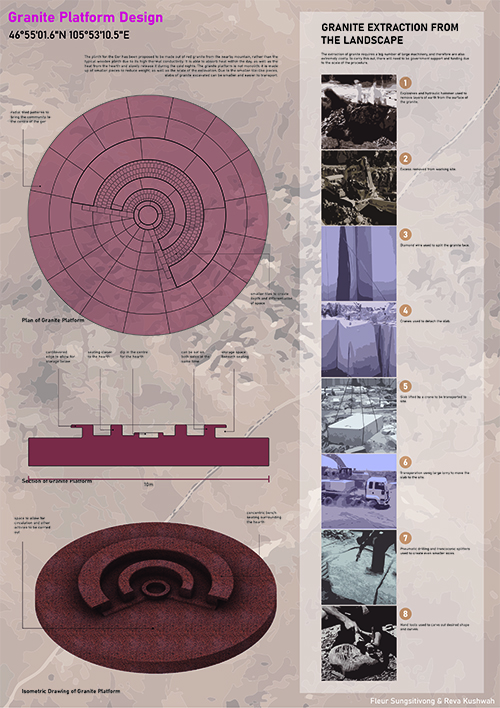
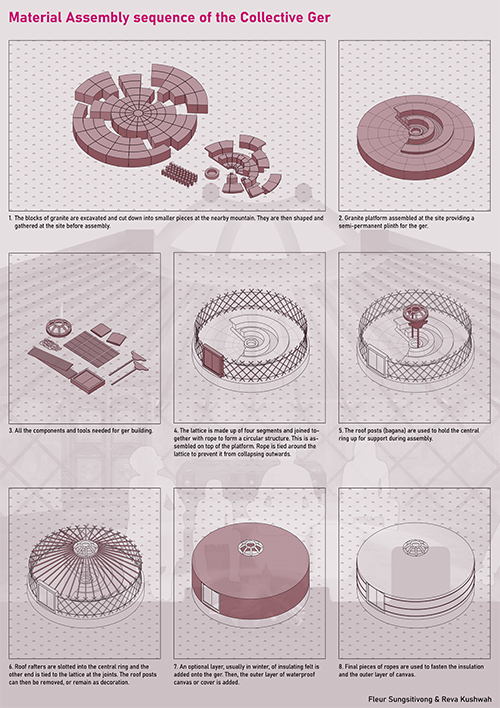
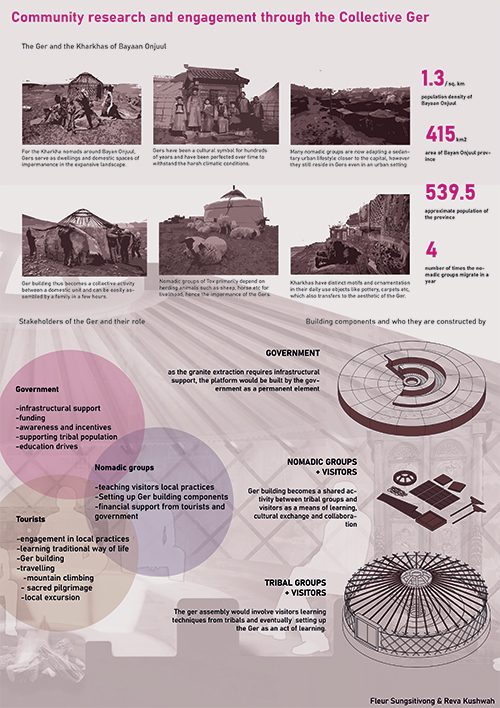









Resistance:
An implementation of a semi-permanent structure at a location where there is not already any existing permanent buildings may cause disagreement with locals.
The adaptation of the ger to become more permanent by infilling lattice with adobe may be disagreed with.
The use of granite may be challenging due to the limited machinery.
Purpose:
This contemplative space can be used as a gathering area for spiritual practice between locals and visitors.
The area can also be transformed into a hub for education, as well as where locals can teach their craftsmanship to any visitors.
What can we learn:
Perhaps this semi-permanent contemplation space does not need to have “permanence”, but celebrate the value of temporariness and the local nomadic lifestyle.

Base – the base is made up of granite piles, extracted from the nearby mountain and cylindrical shapes carved out to allow the found metal rods to slot in.
(not shown) platform – will be made of manure mixed with dry grass and weeds
(not shown) lattice/wall structure – the lattice will be made from wood collected from the nearest forest area (approx 1.5hours on foot). A mixture of manure and dry grass (adobe) will be used to infill the lattice to create a more permanent structure and increase the insulation. Optionally, in winter, a sheet of canvas or animal skin will be placed over the structure as an extra later of insulation.
(not shown) rope – ropes left by rock climbers will be used to tighten the walls further, preventing it from opening outwards. Additionally, it will also be used to connect the pieces of wood for the lattice.
roof structure TBC

This Mongolian yurt is in Hooke Park! It was a second hand purchase from a man who used it to travel around Mongolia for 15 years. It takes 2 people to put up the structure in 1 hour, and another 1-2 hours for the canvas cover.
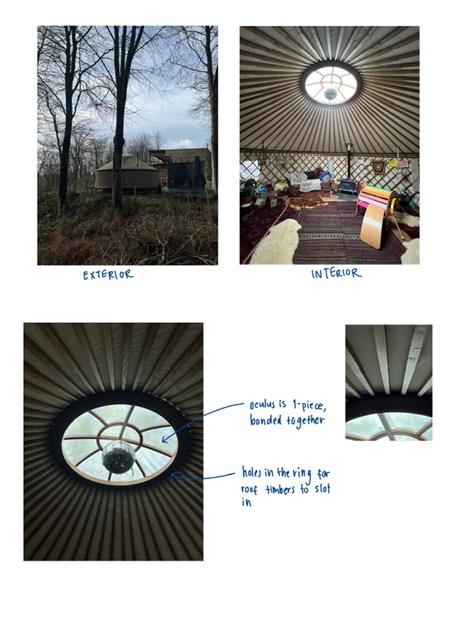

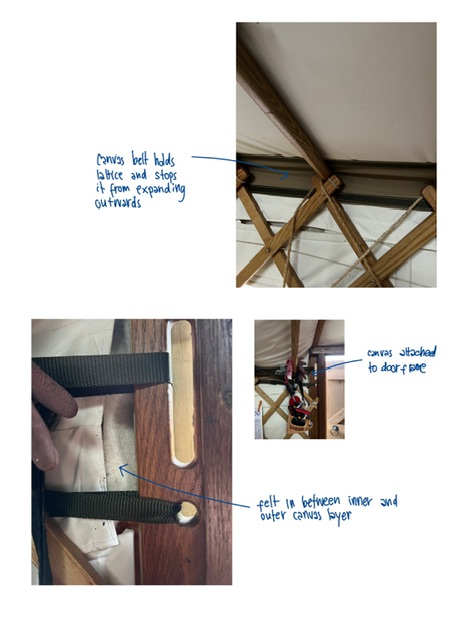



This project proposes a design for community intervention, based on vernacular architecture in Bayan-O’njuul, Töv, Mongolia [46°55’01.6″N 105°53’10.5″E]. The site is located within the dry steppe, cold arid [BSk] which has a very extreme seasonal and daily temperature ranges, with low and irregular precipitation.The specific area of interest within the site region is the Zorgol Khairkhan mountain, which is a sacred mountain next to the Princess Lake.
Within this proposal, there will be a focus on how a community may be built with a shared sensibility in an isolated landscape with very few permanent inhabitants and lack of materials. This project will attempt to suggest a solution by proposing an alternate design system of adapted vernacular building. Tourists and participants of the pilgrimage are involved in the act of building this new 20-people contemplation space by bringing found or local materials as part of their ritual. The space will engage in traditional practices rooted within the landscape, and invites people to move away from permanence and excess and engage in the local form of shared nomadic living.
